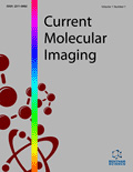Abstract
Optical molecular imaging is a powerful imaging method, which can in vivo monitor physiological and pathobiological processes at the cellular and molecular levels, as opposed to the anatomical level, bridging the gap between imaging and biological processes. Because of its relevance in cardiovascular diseases research, the use of this technology for imaging of cardiovascular diseases advances at a rapid pace in the past decade. This review summarizes the optical molecular imaging methods for imaging the specific targets in cardiovascular diseases, which hold promise for in vivo applications in cardiovascular diseases research. Collectively, in vivo optical molecular imaging may be highly suitable for discriminating targets that play key roles in the occurrence and development of the instable atherosclerosis, thrombogenesis, myocardial infarction, myocardial apoptosis, angiogenesis, as well as in cardiac cell transplantation.
Keywords: Bioluminescent imaging, cardiovascular diseases, fluorescence molecular tomography, near-infrared fluorescence imaging, optical imaging.
 16
16

